The Duchessa Mountains, between Lazio and Abruzzo, are probably known to many for the sad and disturbing story of the murder of Aldo Moro: during his imprisonment, in fact, a letter announced that his body had been thrown into the Duchessa Lake. The news proved to be false, but for a few days those mountains made the headlines, albeit for one of the darkest episodes in our history.
Instead, it is one of the most beautiful and well-preserved mountain massifs in the Apennines, on which the Lazio Region has established a Nature Reserve that today attracts many hikers and nature lovers. Its woods and steep mountain valleys are home to wolves, wild cats, martens, deer and roe deer, and in the skies above the peaks it is easy to observe the majestic flight of the griffon vulture, which has one of its most numerous colonies here, and the golden eagle.
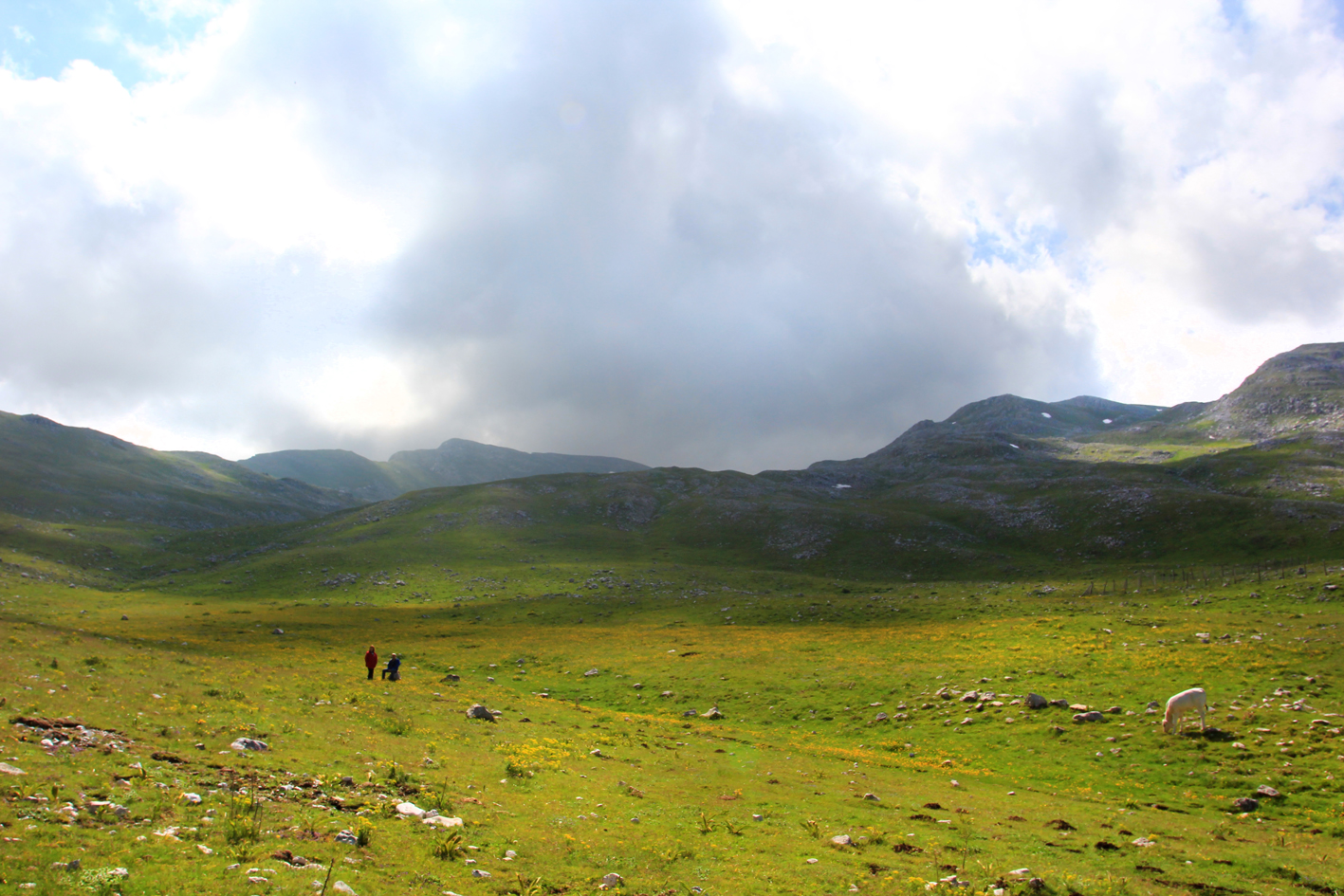
Pastures around the lake
In the meadows around the lake, among the juniper bushes, it is possible to see the small and shy Orsini viper, the least poisonous and rarest of the Italian vipers, and in the waters of the lake to see the endemic triton darting about.
Magnificent beech woods cover the slopes, as far as the high meadows surrounding the lake and the steep cliffs of Murolungo, the highest peak of the massif.

The Murolungo
But it is not only nature that encourages you to spend a few days in these mountains: on the slopes of the mountains, in fact, you can immerse yourself in the medieval atmosphere of the ancient village of Corvaro, perched beneath its tower, or among the 19th-century palaces of Borgorose, or visit the many rural churches that enrich the area, some of which are very old, or walk through the long and luxuriant Malito Valley, where mountain agriculture survives, made up of small family vegetable gardens cultivated with potatoes, beans and tomatoes, all renowned for their quality. And perhaps visit the factory and sales point of the renowned Birra del Borgo, one of Italy’s finest products. But perhaps the most precious pearl of the Nature Reserve is the tiny medieval village of Cartore: the last inhabited centre at the foot of the mountain.
This small village consists of just a few houses, but offers extraordinary views and an atmosphere that is hard to find elsewhere. It has a singular history.
Completely abandoned in the 70s of the last century, without roads, water, light and in part already ruined, it seemed destined to disappear, like many other mountain villages. In the early 1980s, however, the local Comunità Montana, thanks to funding from the former Cassa del Mezzogiorno (Italian National Bank), as part of a vast programme to promote the newly established Monti della Duchessa Nature Reserve, bought a group of properties in an advanced state of disrepair, almost ruins, for a few lire, and with a careful restoration and reconstruction, returned them to their original appearance. The intervention was completed by the reconstruction of the ancient cobblestones of the streets and the creation of all the necessary services.

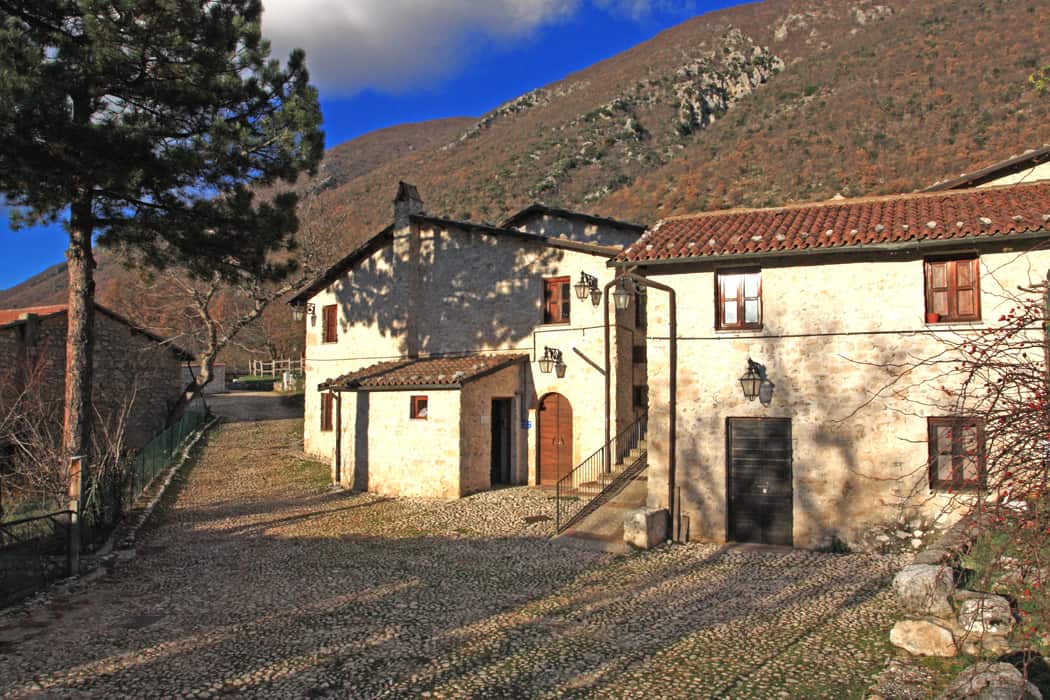
Thus Cartore began its rebirth. Other farmhouses were restored by the owners, favoured by the presence of water, electricity and sewage systems, and by the arrangement of the access road. In the farmhouses restored by the Comunità Montana, a tourist accommodation business was set up, and in more recent years the restoration and revitalisation of the village was completed by the Nature Reserve, which allocated regional funding for the construction of an eco-hotel in another group of beautiful old farmhouses, built according to sustainability criteria. Cartore, after the new restoration, offered the most authentic image of a small, intact and lived-in medieval rural mountain village. But the real change began when the Mountain Community decided to outsource the management of its farmhouses. The winners of the tender were in fact Anna and Marco, a young couple from the area who were able to fly, just like the couple in Lucio Dalla’s famous song: the two young people rolled up their sleeves and in a short time transformed the Casali di Cartore into one of the most popular destinations for hikers and walkers: a fairytale location, genuine and strictly local food, passion, friendliness and an exquisite welcome were the ingredients of success.
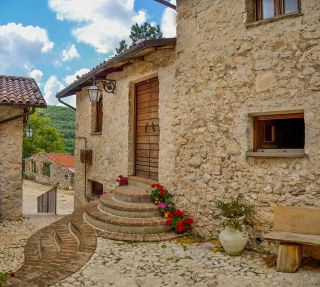
Entrance to one of the flats
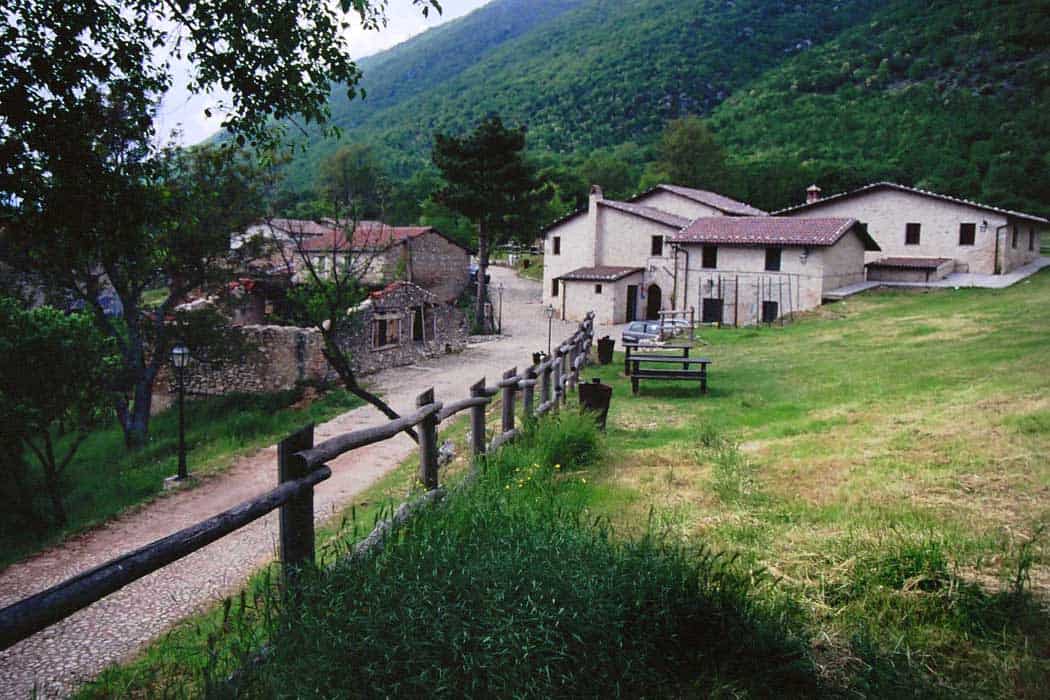
The many hikers who have been walking the Cammino dei Briganti, an evocative itinerary lasting several days, for some years now, and who stop here, have given it the final push. So there are many who now spend the night at the farmhouses and then face the early morning climb through the Val di Teve or Val di Fua that leads to the shelters and then to the Lago della Duchessa, and perhaps stop at the shepherd Amerigo, who does not fail to offer all those who come up there a taste of his excellent ricotta or tasty pecorino produced with the milk of the sheep that feed on herbs and flowers of these meadows, at 1900 meters above sea level. On the way back in the evening, sitting under Anna and Marco’s pergola with the view of the mountains in front of you, a plate of the typical “stringozzi”, a warm spelt soup, sheep’s milk cheese with honey and local jams, will be the ideal completion of a wonderful day, perhaps together with a good story, the kind that Anna never fails to tell her guests, because, she says, these places have a soul, and stories to tell, and those who come here like to hear them.
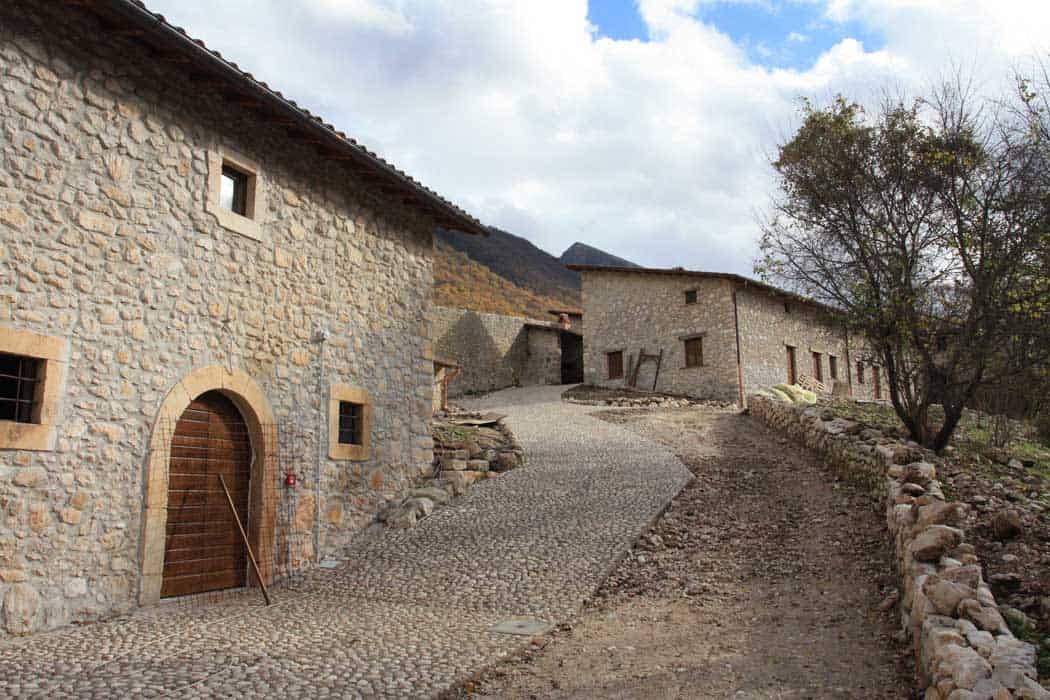

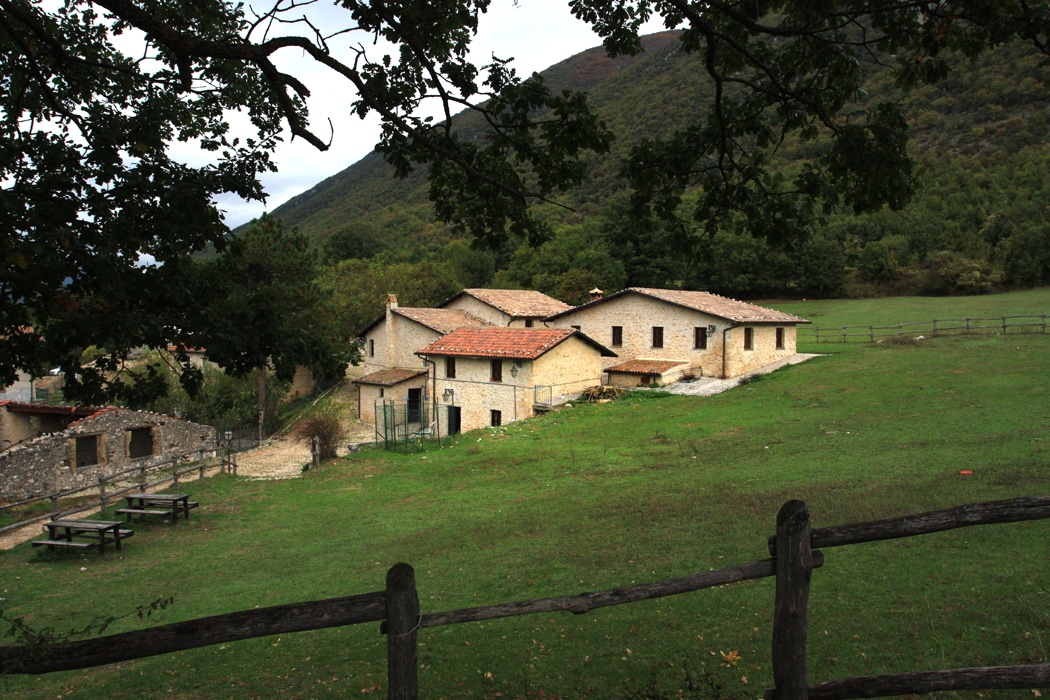
0 Comment